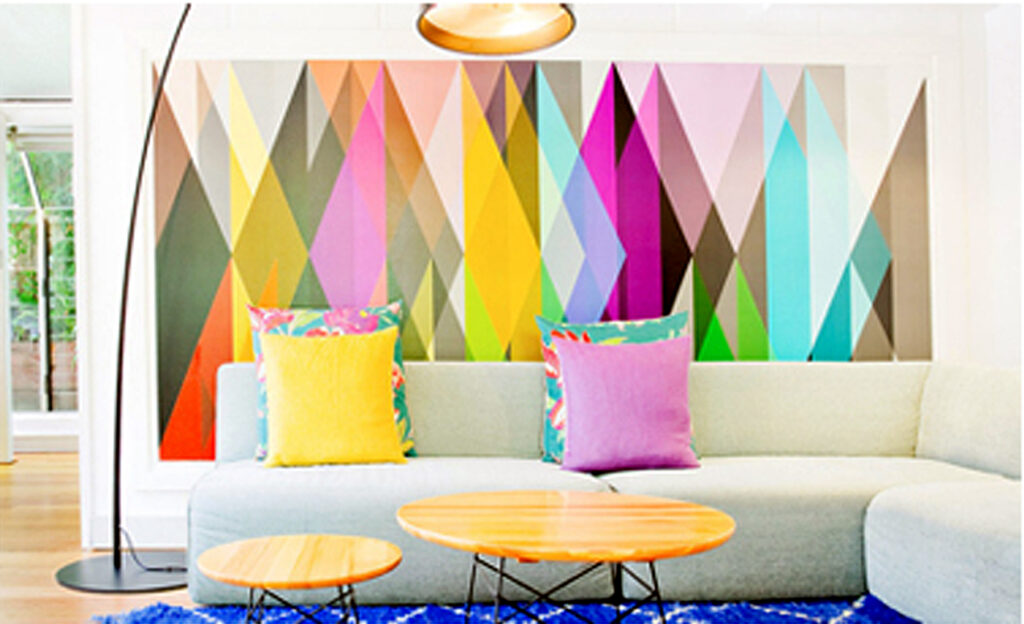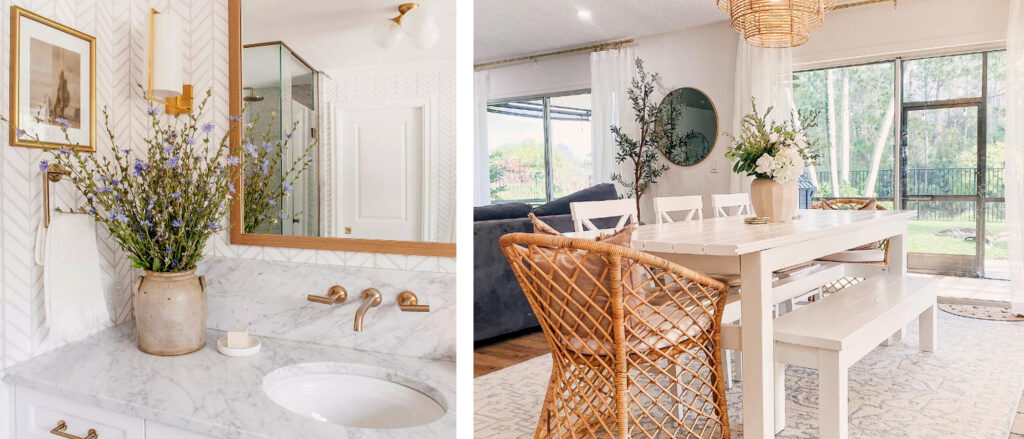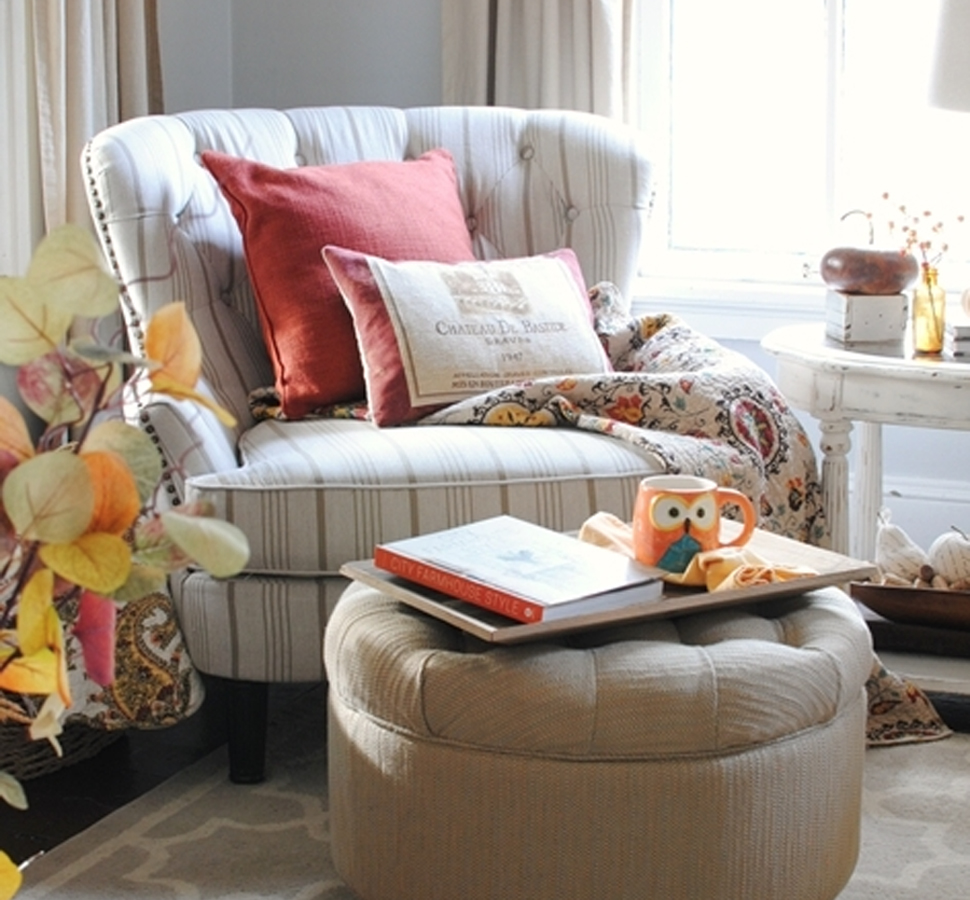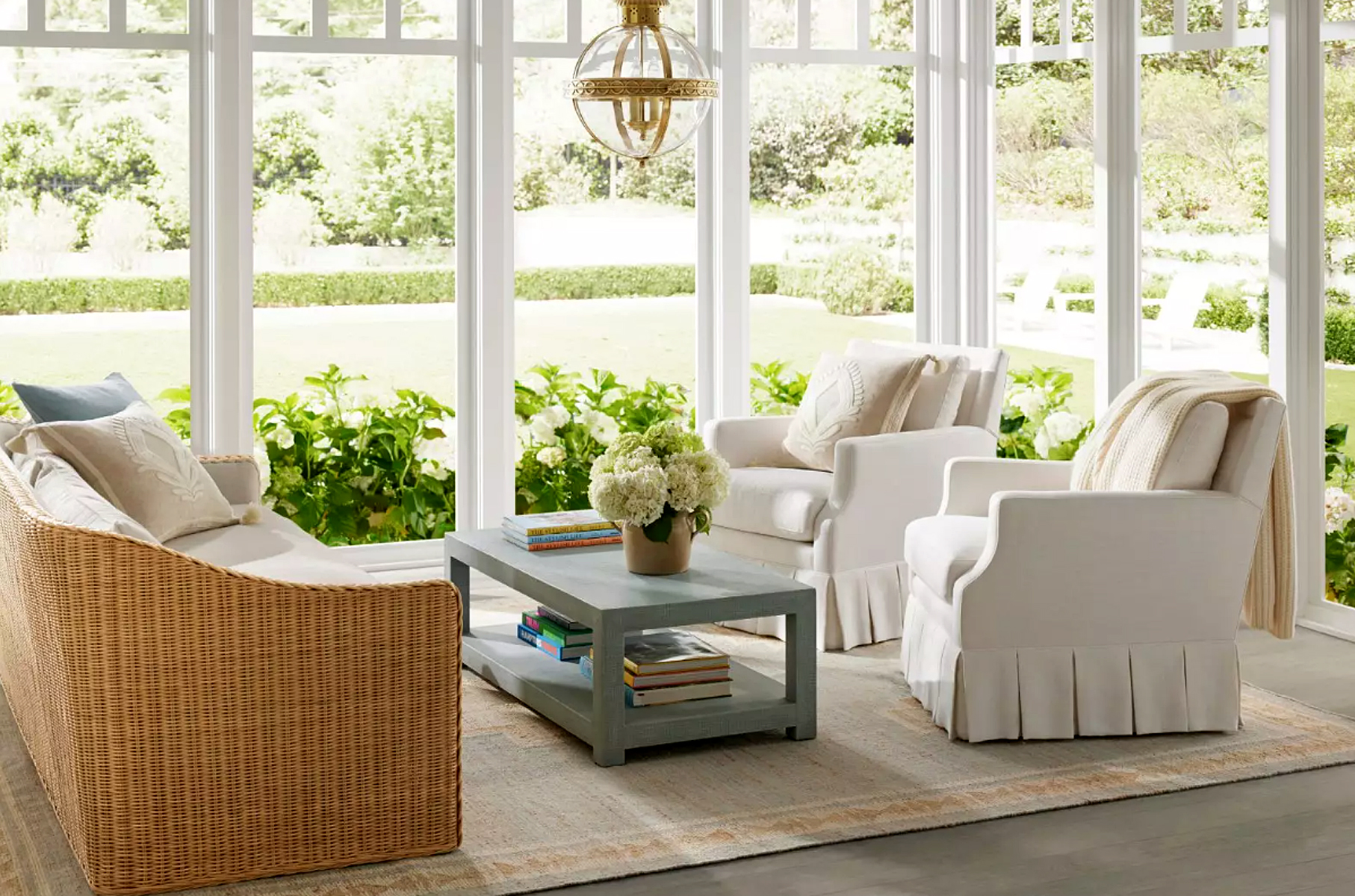serenaandlily.com
Have you ever walked into a room and instantly exhaled and felt more relaxed—or, on the flip side, more tense or overwhelmed? You’re not imagining it. The spaces we occupy deeply influence the way we think, feel, and interact with the world. Changing your decor isn’t just about aesthetics; it’s a subtle yet powerful way to shift your mindset.
Psychologists say that within 7 seconds of entering a space, our mind processes the space and gives us feedback. Is it welcoming? Is it too warm, too cold, too humid, or just right? Is it bright and cheery or dark and dreary? Is it open, inviting, and clean, or stuffed, closed off, and chaotic? How does it smell — fresh and pleasant, or stale and pungent?
A lot happens when we walk into a room. But, when we live in a space the effect the room has on us is amplified and affects our mindset. It’s comparable to staying in a 5-star resort or a 1-star budget motel; one lifts you up and inspires, the other suppresses you, even though it may be functional.
Your Space Reflects Your State of Mind
Our homes often mirror our mental state. Clutter, dim lighting, and mismatched furniture can silently echo internal chaos, stress, indecisiveness, or lack of focus. On the other hand, an organized, well-lit, and intentionally styled space can support clarity, calm, creativity, and confidence.
When you’re feeling stuck, overwhelmed, or uninspired, consider this: your surroundings may be reinforcing those thoughts.
The Psychology of Decor
Design psychology (also known as environmental psychology) is a growing field that explores how colors, textures, lighting, artwork/photos, and layout impact our emotions and cognitive functions.
Color: Blues and greens tend to calm the mind, while yellows uplift and energize. Even small pops of color—such as throw pillows or artwork—can significantly change the emotional tone of a room. Color is a powerful tool which is why I believe some are hesitant to use it. If a room has a neutral palette, introduce color slowly by adding one or two complimentary colors to the scheme. Then, strategically place those colors, and variations of those colors, in areas the eye is naturally drawn to. This creates interest and personality while also establishing a focal point for the room. Focal points anchor a room and that assures and relaxes the mind.

photo credit unknown
Natural Elements: Incorporating plants, wood, stone, or water features can help reduce stress and improve focus. Remember, ‘less is more’ when incorporating plants. Select a few of your favorite plants (not the whole jungle) and strategically place them in the appropriate amount of light while also accenting the décor with a touch of lush green energy. Think of plants as a living sculpture. Water features can be a living sculpture as well and can greatly affect the room’s energy; it can be either uplifting or drowning. You will sense its presence, so don’t hesitate to move it to another location if it is not uplifting you. Just remember, no water in bedrooms because it can cause restless nights. For more details about bringing nature inside, check out my post, “Bring the Outside In” or contact me so we can talk about your specific situation.

serenaandlily.com
Lighting: Natural light is a mood booster. Replace heavy window treatments with sheer ones or use mirrors to reflect the natural light in the room and open up space. Be cautious about placing large mirrors across the room from a large window. Birds can be deceived into thinking they can fly through the window because the mirror creates an endless illusion. Birds can break their necks flying into a window pane. Place the mirror in side locations or on a flat surface so that it can reflect the natural light. This can simply be placing a tray with a mirrored bottom or a sculpture with reflective accents.
Simplicity: Minimalist design helps reduce mental clutter. It doesn’t mean sterile—it means intentional. A home should embrace you and that means there should be items that uplift you and items that serve you. Once those have been determined, there is no need to have excessive items. In fact, the less you have, the more prominent the existing items become. It’s the ‘less is more’ effect and it works! Minimalism is also about order. Creating order creates a sense of openness and space, and the mind will find peace when order and visual rhythms are in place.
Small Changes, Big Impact
You don’t need a full renovation to reset your mindset. Here are a few simple ways to change your decor—and change your thoughts:
- Rearrange Furniture: Even just moving your desk or bed can shift your perspective. Moving artwork from room to room can give the artwork a whole new vibe. Also, updating family photos is a fun way to redecorate and bring fresh energy into a space.
- Declutter: Clearing out items you no longer use or love can be incredibly freeing. For me, it’s like a weight lifts off my shoulders. Another perk I love is the less stuff I own the less I have to dust, or launder, or repair. Decluttering doesn’t need to be traumatic, simply select an area then declutter and organize it. This can start with the cosmetic graveyard in the bathroom drawer, the entry closet, the nightstand by your bed, or the kitchen spices. Once you feel the weight lifting it becomes addictive, in a good way. Give away or sell any of the excess items that are still in perfect condition, recycle or toss the rest, and then celebrate as the heaviness floats away.

redefinedhome.com
- Create a “Positive Energy” Corner: Use this space to meditate, journal, read, or do anything that nourishes your mind. This space is your sanctuary, so feel free to create a house rule that you are not to be disturbed while you are using it. The space can be anywhere that the floor plan can accommodate it aesthetically and feels good to you. It can simply be a corner with a cozy chair or your bedroom that embraces you at night after a harried day. (For more bedroom insights, check out my post “Bedrooms Are Our Personal Sanctuaries”.)

town-n-country-living.com
- Swap Artwork or Photos: Replace outdated or emotionally heavy items with ones that inspire joy, adventure, or peace. I mentioned family photos earlier, and those should be replaced frequently as the family grows. All other photos and artwork that hold you in the past should be replaced with current inspiring pieces. Any abstract art containing sharp angles and/or slashing shapes should be replaced with softer angles and shapes. Images with violent implications or death such as wounded or dead animals or dying flowers should be replaced with life-giving images. Any pictures of the deceased should not be displayed, instead lay those ancestors to rest in a family album.

photo credit unknown
- Add a Scent: Aromatherapy, such as lavender for calm or citrus and peppermint for energy, can subtly influence your mindset. Select essential oils for the season, such as floral scents with hints of citrus or peppermint in the spring and summer, and earthier scents, such as evergreen, eucalyptus, orange, cinnamon, and peppermint, for the fall and winter. I have an arsenal of heavenly blends and recipes that can take you and your home to another world. Let’s talk (click here) about how you can use aromatherapy to shift your mood as well as the mood of your home and your family. It works like magic; I have seen rebellious defiant teenagers open up to their parents by simply diffusing essential oils. It’s definitely worth exploring the possibilities.
- Listen: Our minds are highly tuned in to all sounds surrounding us. Even though we may be distracted and not notice the birds singing, nearby sirens, or a squeaky floor, our subconscious is hearing every sound wave. If you live in a noisy neighborhood, consider upgrading window treatments to quiet the house, especially the bedrooms. High ceilings and hard surfaces also amplify sound, so if you have high ceilings and/or hard-surfaced floors, add textural layers to your décor, such as a large area rug in conversation areas. Use a pad under the area rug to add another layer of sound absorption; this also helps extend the rug’s life while creating a softness underfoot. Loud sounds create tension, stress, mental fatigue, and physical discomfort. Be mindful of the volume on sound systems and TVs, as well as conflicting sounds, such as having a TV on in one room and music playing in another room. Calming the sound not only enhances your well-being, but also the well-being of your children, pets, and plants.
Make It Personal
Your home should be a reflection of who you are becoming, not just who you’ve been. As you evolve, allow your décor to evolve with you. Think of it as an external vision board—reminding you daily of your intentions, values, and dreams.
One Final Thought: Changing your décor is more than a design choice—it’s a form of self-care. When you make your environment feel good, you make it easier to feel good in it. So if you’re feeling stuck, don’t underestimate the power of a paintbrush, a plant, or a well-placed lamp. Change your decor, and notice how your thoughts change.
Where are you going to start? There’s no right answer… it’s all about allowing the energy to flow.


Leave A Comment